Monitoring & Maintenance of Solar Systems: A Yearly Guide
At Ramselec Solar, we believe solar success doesn’t end at installation. Regular monitoring and annual maintenance are the cornerstone of system efficiency, safety, and long-term savings. This guide outlines how to care for a solar system year after year, ensuring peak performance, preventing system faults, and maintaining warranties.
Table of Contents
Why Maintenance Matters Every Year
What to Monitor in a Solar System
3. Battery Performance (If Installed)
4. Mounting Hardware & Electrical Wiring
How to Clean Solar Panels Safely
Key Takeaways
Annual checks prevent energy loss and costly repairs.
Inverter performance must be reviewed yearly.
Panel cleaning can improve energy yield by up to 20%.
Battery systems require scheduled health checks.
Professional servicing helps maintain warranty coverage.
Why Maintenance Matters Every Year
Solar systems may appear self-sufficient, but beneath the surface lies a complex electrical infrastructure that is subject to aging, environmental exposure, and gradual wear.
Without regular maintenance, issues can arise, such as:
Reduced energy output: A build-up of dust, shading, or component degradation can lower overall system performance and increase reliance on grid power.
Water ingress and corrosion: Cracked seals or damaged enclosures can allow moisture to penetrate, leading to rust, short circuits, or system failure.
Inverter inefficiencies: A poorly performing inverter can affect energy conversion, resulting in reduced energy yield and unnoticed system faults.
Voided warranties: Most manufacturers require regular maintenance as a condition of warranty coverage, and neglect may lead to denied claims.
Unexpected shutdowns during high-demand periods: System failures often occur during peak usage times, disrupting energy supply when it's needed most.
System efficiency tends to decline noticeably over time without routine upkeep. Periodic inspections can help identify early signs of degradation and prevent major issues from developing, ultimately reducing the risk of costly repairs in the long term.
What to Monitor in a Solar System
Routine annual checks should include a comprehensive review of the following components:
1. Panel Condition
Panels should be examined for:
Cracks, discolouration, or physical damage: Cracks or surface flaws can allow moisture to penetrate the panel, reduce output, and eventually lead to complete failure. Discolouration may also indicate ageing or thermal issues within the cells.
Accumulated dirt, bird droppings, or leaf debris: Organic matter and dust can create hotspots by blocking sunlight from reaching the cells in photovoltaic systems. If left uncleaned, these obstructions may cause irreversible damage to the panel surface.
Signs of water damage on seals or frame edges: Damaged seals or pooling water around the frame can lead to corrosion and short circuits. This can impact both safety and overall system efficiency over time.
Even minor soiling can reduce output by 5–15%. Regular cleaning and inspection help ensure that panels maintain optimal performance and minimise the risk of long-term degradation.
2. Inverter Status
As the core of energy conversion, the inverter should be:
Free of warning lights or error codes: Status lights or error messages often indicate system faults that may disrupt energy conversion. Immediate investigation helps prevent further damage or power loss.
Delivering expected kilowatt-hour output: The output recorded should match seasonal expectations and historical data. A consistent shortfall could signal inefficiencies or technical faults that need expert review.
Operating without excessive noise or heat: Inverters should run smoothly with minimal sound and within normal temperature ranges. Overheating or unusual noise may suggest component failure, dust blockage, or poor ventilation.
Comparing real-time data to historical performance can reveal any system inconsistencies. Monitoring over time helps identify trends, prevent unnoticed declines in performance, and guide proactive maintenance.
3. Battery Performance (If Installed)
In hybrid or off-grid systems, battery health is essential.
Key aspects to review:
Charge/discharge cycles in line with expected usage: Monitoring these cycles ensures the battery is operating within recommended parameters. Significant deviations may point to faulty cells or improper load distribution.
Firmware updates applied as required: Regular firmware updates provide new features, safety improvements, and bug fixes. Ensuring the battery management system is up to date supports optimal function and integration with the inverter.
Physical condition showing no bulging, corrosion, or leakage: Any physical abnormalities may indicate internal pressure build-up, fluid leakage, or chemical corrosion. These are safety risks and should be addressed immediately.
Most manufacturers recommend annual servicing to meet warranty requirements. Adhering to service intervals not only protects the warranty but also extends the usable life of the battery.
4. Mounting Hardware & Electrical Wiring
The physical stability and safety of the system depend on:
Absence of rust, mechanical wear, or corrosion: Brackets, bolts, and frames should be checked for rust or fatigue, especially in coastal or high-wind regions. Corroded components can compromise the safety and security of the system.
Cables free of sagging or UV degradation: Wiring should be properly supported and insulated. UV damage or sagging cables increase the risk of electrical faults, short circuits, and even fire.
Secure rooftop mounting and structural alignment: Panels must remain firmly attached and correctly angled to ensure maximum exposure to sunlight. Misalignment or loose fittings may lead to damage during storms or high winds.
Neglecting these components may result in hazards or system failure. Regular structural inspections help prevent safety risks, energy loss, and costly emergency repairs.
How to Clean Solar Panels Safely
Cleaning should be done at least once annually, more frequently in areas prone to dust, pollution, or bird activity. Regular cleaning helps prevent the build-up of residue that can block sunlight and reduce overall energy output.
Do:
Use soft brushes or cloths with deionised water: Gentle cleaning tools prevent scratches on the glass surface, while deionised water leaves no mineral residue behind.
Clean during cooler times, early morning or evening: Cleaning in cooler conditions helps avoid thermal stress that could cause cracks or warping in the panels.
Follow the panel manufacturer's recommendations: Each solar panel may have specific maintenance requirements, and following the correct procedure protects long-term performance and warranty coverage.
Avoid:
Harsh chemicals or abrasive tools: Strong cleaning agents or rough scrubbing materials can erode protective coatings and damage the panel surface permanently.
High-pressure water: Forceful water jets may damage seals, joints, or connectors, increasing the risk of leaks or electrical faults.
Cleaning while the system is energised: Working on live systems poses electrical hazards. Always ensure the system is safely shut down before performing any maintenance.
In cases of difficult roof access or commercial installations, professional cleaning is advisable. Trained technicians are equipped to clean panels safely and thoroughly, often combining cleaning with a routine inspection.
Monitoring Tools to Install
Modern solar systems benefit from integrated monitoring tools such as:
Wi-Fi-enabled data tracking platforms: These platforms allow remote access to performance data, helping identify system inefficiencies or faults from anywhere.
Mobile applications for real-time performance updates: Apps offer instant updates on energy generation, consumption trends, and potential alerts for quicker response to issues.
Alert systems for faults or outages: Automatic notifications alert users to any performance drops or technical problems, helping reduce downtime and energy loss.
Comparative analysis tools for seasonal output variations: These tools allow users to review energy production trends over time, identify inconsistencies, and plan future maintenance or upgrades accordingly.
These tools help identify drops in efficiency and support timely interventions. Proactive monitoring leads to early problem detection, improved system reliability, and better long-term performance.
What’s Included in a Professional Yearly Service?
A typical professional maintenance check includes:
Visual inspection and light cleaning of panels: Technicians examine panels for visible damage, dirt build-up, and signs of wear, followed by cleaning to restore efficiency.
Inverter functionality diagnostics: Inverter performance is tested to ensure it is operating correctly and efficiently, with checks for any faults or output inconsistencies.
Electrical testing (voltage, continuity, insulation resistance): Comprehensive testing ensures the wiring and electrical components are safe, functional, and compliant with safety standards.
Structural inspection of mounts and wiring: The mounting system and electrical connections are examined for rust, corrosion, physical stress, and secure attachment to the roof or frame.
A report outlining findings and recommendations: A detailed report is provided summarising the condition of the system, any detected issues, and suggested corrective actions.
Certified inspections ensure compliance with safety standards and support the longevity of the system. Scheduled servicing not only safeguards performance but also helps preserve warranties and system value.
Recommended Annual Schedule
January – March: Conduct an inverter data review to detect early anomalies and confirm output stability.
April – June: Clean panels following the summer period to remove accumulated dirt and organic debris.
July – August: Perform a mid-year monitoring check, reviewing performance data and system alerts.
September: Assess battery health (if applicable), including testing charge cycles and updating software.
November: Carry out a complete system inspection covering electrical components, panel surfaces, wiring, and inverter health.
Note: Areas near the coast or in industrial zones may require more frequent inspections due to increased exposure to salt, dust, and air pollutants.
Conclusion
Regular maintenance and monitoring turn a good solar investment into a great one. Ramselec Solar offers comprehensive yearly servicing tailored to both residential and commercial systems. Protect the system’s lifespan, preserve output, and stay compliant. Book your annual solar check today. For system inspections, performance monitoring, or expert cleaning, contact us today.
FAQs
1. How often should solar panels be cleaned?
Solar panels should typically be cleaned once a year. In regions with high dust, salt air, or frequent bird activity, it is recommended to clean and maintain solar panels twice a year to help preserve optimal efficiency.
2. Is mobile monitoring available for solar systems?
Most solar systems include access to mobile applications that allow real-time monitoring. These apps provide data on energy production, usage, and system alerts.
3. What are common signs that an inverter requires maintenance?
Warning lights, error codes, reduced energy output, or unusual sounds during operation may indicate the need for inverter servicing or inspection.
4. Does regular maintenance influence warranty validity?
Yes. Many solar component warranties require evidence of scheduled maintenance to remain valid throughout the warranty term.
5. Do solar panels lose efficiency over time?
Yes. Panels generally degrade at a rate of 0.5% to 1% per year. Factors such as dirt accumulation or physical damage can accelerate this process.
6. What does a professional solar system check typically involve?
A routine check includes panel inspection, inverter diagnostics, electrical system testing, and a detailed report on overall system condition and performance.







